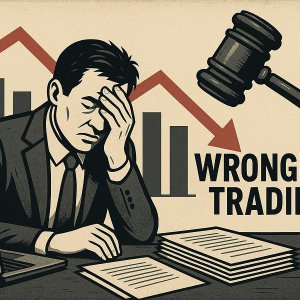What Does Liquidation Mean?
A summary of what a liquidation means and the three different types of liquidation procedures
Liquidation - What is it?
If a company is placed into liquidation, then its assets are sold or “liquidated” to turn those assets into cash, which are then paid to the creditors and shareholders of the Company in the order of priority set out in the Insolvency Act and associated Rules.
There are three types of liquidation:
When a company is placed into liquidation, it must have a liquidator in office to handle the liquidation at all times. Only a Licensed Insolvency Practitioner can act as a liquidator, or a government civil servant called the Official Receiver. While the liquidator can be changed in some circumstances, for example if the insolvency practitioner changes firms or retires, there must always be a liquidator in office during the course of the liquidation.
The liquidator is essentially in charge of the company and effectively replaces the directors, who no longer have any authority in respect of the company as soon as it is placed into liquidation. However they do still have a statutory duty to cooperate and assist the liquidator with his duties and to provide information where necessary.
Creditors Voluntary Liquidation
A Creditors Voluntary Liquidation, or “CVL”, is the most widely used insolvency process in the UK and is used to liquidate insolvent companies which cannot pay their debts..
Usually the Company has run out of cash or is facing financial pressure from its lenders or creditors and the directors make the decision to place the Company into Liquidation.
The directors will need to contact a Liquidator, who must be a Licensed Insolvency Practitioner and instruct them to place the company into liquidation. This will involve calling a meeting of shareholders and a decision procedure for creditors.
The meeting of shareholders and decision procedure for creditors are usually held virtually and can take place between seven and twenty one days or so from the director signing notices. The Director, with the assistance of the Insolvency Practitioner, will prepare and present to the creditors a Statement of Affairs, which is a summary of the company’s assets and liabilities.
At the meeting of shareholders the members decide to place the company into liquidation and appoint a Liquidator. It is the creditors however who ultimately decide which Insolvency Practitioner should be appointed as Liquidator which is why it is called a Creditors Voluntary Liquidation.
The Liquidator will then proceed with liquidating the assets of the company with a view to paying a dividend to the creditors.
The directors of an insolvent company may have a number of options available to them, as follows:
Firstly, the directors may be able to claim redundancy pay from The Insolvency Service if they are considered to be employees of the company. This is a simple process which we are able to assist with.
Secondly, the directors may wish to form a phoenix company, which is a new company incorporated to purchase the assets of the company in liquidation and take over the running of the business thereby rescuing the company's underlying business. More information in respect of phoenix companies can be found by following the link.
This is a complicated area of law, with strict rules and procedures so taking advice will be essential, which we are happy to provide.
More information on Creditors Voluntary Liquidation generally and the processes involved can be found by following the link.
Compulsory Liquidation
Compulsory Liquidation is a Court driven procedure, whereby a creditor has issued a Winding Up Petition to force a company into Liquidation.
The amount owed to the creditor must be more than £750 and more often than not a Statutory Demand has been issued first. More information on Statutory Demands can be found by following the link.
Once a petition is issued, a hearing date is set by the Court. On that date the Court will decide whether or not the company should be placed into liquidation, and an order to that effect will be made.
On the making of the Winding Up Order a Government civil servant called the Official Receiver will be appointed as the liquidator of the company, who will then seek to liquidate the company’s assets and investigate the conduct of the directors.
However, if creditors want to appoint their own choice of liquidator then they can. If there is enough support, over 50% of creditor votes, then a Secretary of State Appointment can be made, which is often the quickest way to appoint a private sector insolvency practitioner. If there is not 50% of creditor support, then a creditor can requisition a meeting at which a vote is taken, and whichever insolvency practitioner has the most votes is appointed.
Also sometimes the Official Receiver may not wish to stay in office because the case is too complicated, or they have too many cases to deal with. In those circumstances the Official Receiver can hand out the liquidation to a local Insolvency Practitioner who is on the local rota.
More information on Compulsory Liquidations can be found here.
If a Statutory Demand or a Winding Up Petition has been issued it is still not too late to take action. We would be happy to provide you with advice in that regard and discuss the options with you.
Members Voluntary Liquidation
A Members Voluntary Liquidation is also called a solvent liquidation and because there are usually no outstanding creditors. Accordingly the members are in charge and decide which Insolvency Practitioner is appointed as Liquidator of the Company.
The Liquidator will usually liquidate the assets of the business and then distribute those assets to the shareholders. This can be done by either selling the assets and distributing the funds to the shareholders, or by transferring the assets direct to the shareholders, which is often called a distribution in specie.
There are often significant tax advantages to placing a company into Members Voluntary Liquidation, particularly if Entrepreneurs Relief, or Business Asset Disposal Relief is available to the shareholders. This can often reduce the tax payable to 10%. Further information in that regard can be found by following the links. Our page on Members Voluntary Liquidation will also provide further information on the rules and procedures.
If you would like any advice or assistance with placing a company into liquidation please contact Chris Parkman on 01305 458383 or via email at chris@purnells.co.uk.
Would you like us to give you a call?
Fill in the form and we'll give you a call as soon as we can to discuss your needs in a free initial consultation with a Licensed Insolvency Practitioner. Alternatively give us a call on 01326 340579 if there is an urgency to your needs.
The information provided will be used solely to contact you and any information you provide will be held in accordance with our firm's privacy policy, and not used for marketing purposes.





